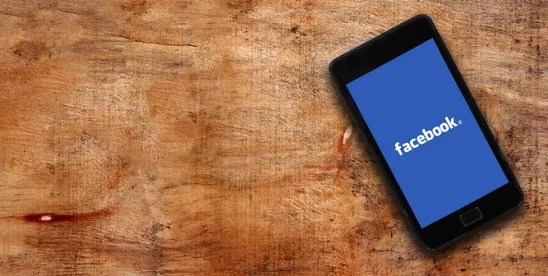On November 18, 2016, antidumping (AD) and countervailing duty (CVD) petitions with the U.S. Department of Commerce (DOC) and U.S. International Trade Commission (ITC), regarding certain hardwood plywood products from the People’s Republic of China. The petitioner is the Coalition for Fair Trade in Hardwood Plywood and its individual members: Columbia Forest Products, Commonwealth Plywood Inc., Murphy Plywood, Roseburg Forest Products Co., States Industries, Inc., and Timber Products Company.
The U.S. AD law imposes special tariffs to counteract imports that are sold in the United States at less than “normal value.” The U.S. CVD law imposes special tariffs to counteract imports sold in the United States that benefit from unfair foreign government subsidies. For AD and CVD duties to be imposed, the U.S. government must determine not only that dumping and subsidization is occurring, but also that there is “material injury” (or threat thereof) by reason of the dumped imports. Importers are liable for any potential AD/CVD duties imposed. In addition, these investigations could impact purchasers, by either increasing prices, and/or decreasing supply, of hardwood plywood.
Note, the U.S. industry filed AD/CVD petitions in September 2012 on hardwood plywood from China. Although the DOC found dumping margins, in November 2013, the U.S. International Trade Commission (ITC) issued a negative final determination on injury and threat of injury, so the DOC did not impose AD or CVD orders on this product.
Scope:
The petitioners propose the following scope of investigation:
The merchandise subject to this investigation is hardwood and decorative plywood. Hardwood and decorative plywood is a flat panel composed of an assembly of two or more layers or plies of wood veneers in combination with a core. The veneers, along with the core, are glued or otherwise bonded together to form a finished product. A hardwood and decorative plywood panel must have at least either the face or back veneer composed of one or more species of hardwood or bamboo. Hardwood and decorative plywood may include products that meet the American National Standard for Hardwood and Decorative Plywood, ANSI/HPVA HP-1-2016.
All hardwood and decorative plywood is included within the scope of this investigation, without regard to dimension (overall thickness, thickness of face veneer, thickness of back veneer, thickness of core, thickness of inner veneers, width, or length). However, the most common panel sizes of hardwood and decorative plywood are 1219 x 1829 mm ( 48 x 72 inches), 1219 x 2438 mm ( 48 x 96 inches), and 1219 x 3048 mm (48 x 120 inches).
A “veneer” is a thin slice of wood which is rotary cut, sliced or sawed from a log, bolt or flitch. The face veneer is the exposed veneer of a hardwood and decorative plywood product which is of a superior grade than that of the back veneer, which is the other exposed veneer of the product (i.e., as opposed to the inner veneers).
When the two exposed veneers are of equal grade, either one can be considered the face or back veneer. For products that are entirely composed of veneer, such as Veneer Core Platforms, the exposed veneers are to be considered the face and back veneers, in accordance with the descriptions above.
The core of hardwood and decorative plywood consists of the layer or layers of one or more material(s) that are situated between the face and back veneers. The core may be composed of a range of materials, including but not limited to veneers, particleboard, and medium-density fiberboard (MDF).
All hardwood and decorative plywood is included within the scope of this investigation regardless of whether or not the face and/or back veneers are surface coated. Examples of surface coatings include, but are not limited to, ultra-violet light cured polyurethanes, oil or oil-modified or water based polyurethanes, wax, epoxy-ester finishes, moisture-cured urethanes, and paints and stains that cause the grain, texture or markings of the wood to be obscured. Hardwood and decorative plywood may be coated through the utilization of paper, aluminum, high pressure laminate (HPL), MDF, medium density overlay (MDO), and phenolic film. Additionally, the face veneer of hardwood and decorative plywood may be sanded, smoothed or given a “distressed” appearance through such methods as hand-scraping or wire brushing. All hardwood and decorative plywood is included within the scope even if it is trimmed, cut-to-size, notched, punched, drilled, or has underwent other forms of minor processing.
Subject merchandise also includes hardwood and decorative plywood that has been further processed in a third country, including but not limited to trimming, cutting, notching, punching, drilling, or any other processing that would not otherwise remove the merchandise from the scope of the investigation if performed in the country of manufacture of the in-scope product.
The scope of the investigation excludes the following items: (1) structural plywood (also known as “industrial plywood” or “industrial panels”) that is manufactured and stamped 10 meet U.S. Products Standard PS 1-09, PS 2-09, or PS 2-10 for Structural Plywood (including any revisions to that standard or any substantially equivalent international standard intended for structural plywood), including but not limited to the "bond performance" requirements set forth at paragraph 5.8.6.4 of that Standard and the performance criteria detailed at Table 4 through I 0 of that Standard; (2) products which have a face and back veneer of cork; (3) multilayered wood flooring, as described in the antidumping duty and countervailing duty orders on Multilayered Wood Flooring from the People’s Republic of China, Import Administration, International Trade Administration, U.S. Department of Commerce Investigation Nos. A-570-970 and C-570-971 (published December 8, 2011), and additionally, multilayered wood flooring with a face veneer of bamboo or composed entirely of bamboo; (4) plywood which has a shape or design other than a flat panel, with the exception of any minor processing described above; (5) products made entirely from bamboo and adhesives (also known as “solid bamboo”).
There is no set tariff classification for hardwood plywood. Imports of hardwood plywood are primarily entered under the following HTS numbers: 4412.3 1.0520; 4412.31.0540; 4412.31.0560; 4412.31.2510; 4412.31.2520; 4412.31.4040; 4412.31.4050; 4412.31.4060; 4412.31.4075; 4412.31.4080; 4412.31.5125; 4412.31.5135; 4412.31.5155; 4412.31.5165; 4412.31.5175; 4412.31.6000; 4412.31.9100; 4412.32.0520; 4412.32.0540; 4412.32.0565; 4412.32.0570; 4412.32.2510; 4412.32.2525; 4412.32.2530; 4412.32.3125; 4412.32.3135; 4412.32.3155; 4412.32.3165; 4412.32.3175; 4412.32.3] 85; 4412.32.5600; 4412.94.1030; 4412.94.1050; 4412.94.3105; 4412.94.3121; 4412.94.3141; 4412.94.3160; 4412.94.3161; 4412.94.3171; 4412.94.3175; 4412.94.4100; 4412.99.0600; 4412.99.1020; 4412.99.1030; 4412.99.1040; 4412.99.3110; 4412.99.3120; 4412.99.3130 4412.99.3140; 4412.99.3150; 4412.99.3160; 4412.99.3170; 4412.99.4100; 4412.99.51 15; and 4412.99.5710. With the exception of 4412.99.0600 and 4412.99.5115, all of these HTS codes are included in the definition of “hardwood plywood” used by the U.S. Department of Agriculture's Foreign Agricultural Service in reporting imports. These are also the import categories which HPV A and Coalition members regularly monitor. The most-favored nation duty rate for imports under these HTS numbers varies from 0 to 8 percent.
Products covered by this scope may also be imported under HTS numbers: 4412.10.0500; 4412.39.1 000; 4412.39.3000; 4412.39.4011; 4412.39.4012; 4412.39.4019; 4412.39.4031; 4412.39.4032; 4412.39.4039; 4412.39.4051; 4412.39.4052; 4412.39.4059; 4412.39.4061; 4412.39.4062; 4412.39.4069; 4412.39.5010; 4412.39:5030; 4412.39.5050; 4412.99.6000; 4412.99.7000; 4412.99.8000; 4412.99.9000; 4412.10.9000; 4412.94.5100; 4412.94.9500; and 4412.99.9500. While these HTS codes were identified as relevant by the Commission in the prior investigation, they apply primarily to products with a softwood veneer or to products that the industry does not consider to be plywood. Petitioners note that their identification of the proper HTS codes captures approximately 88 percent of the imports identified in the prior investigation.
Alleged Dumping Margins:
Petitioner alleges a dumping margin of 105.94 percent.
Estimated Schedule of Investigations:
-
November 18, 2016 – Petitions are filed
-
December 8, 2016 – DOC initiates AD/CVD investigations
-
December 9, 2016 – ITC staff conference
-
January 3, 2017 – Deadline for ITC preliminary injury determination
-
February 13, 2017 – Deadline for DOC preliminary CVD determination, if deadline is not postponed
-
April 17, 2017 – Deadline for DOC preliminary CVD determination, if deadline is fully postponed
-
April 27, 2017 – Deadline for DOC preliminary AD determination, if deadline is not postponed
-
June 16, 2017 – Deadline for DOC preliminary AD determination, if deadline is fully postponed
-
October 30, 2017 – Deadline for DOC final AD determination, if both preliminary and final AD determinations are fully postponed
-
December 14, 2017 – Deadline for ITC final injury determination, assuming fully postponed DOC deadlines





 />i
/>i

